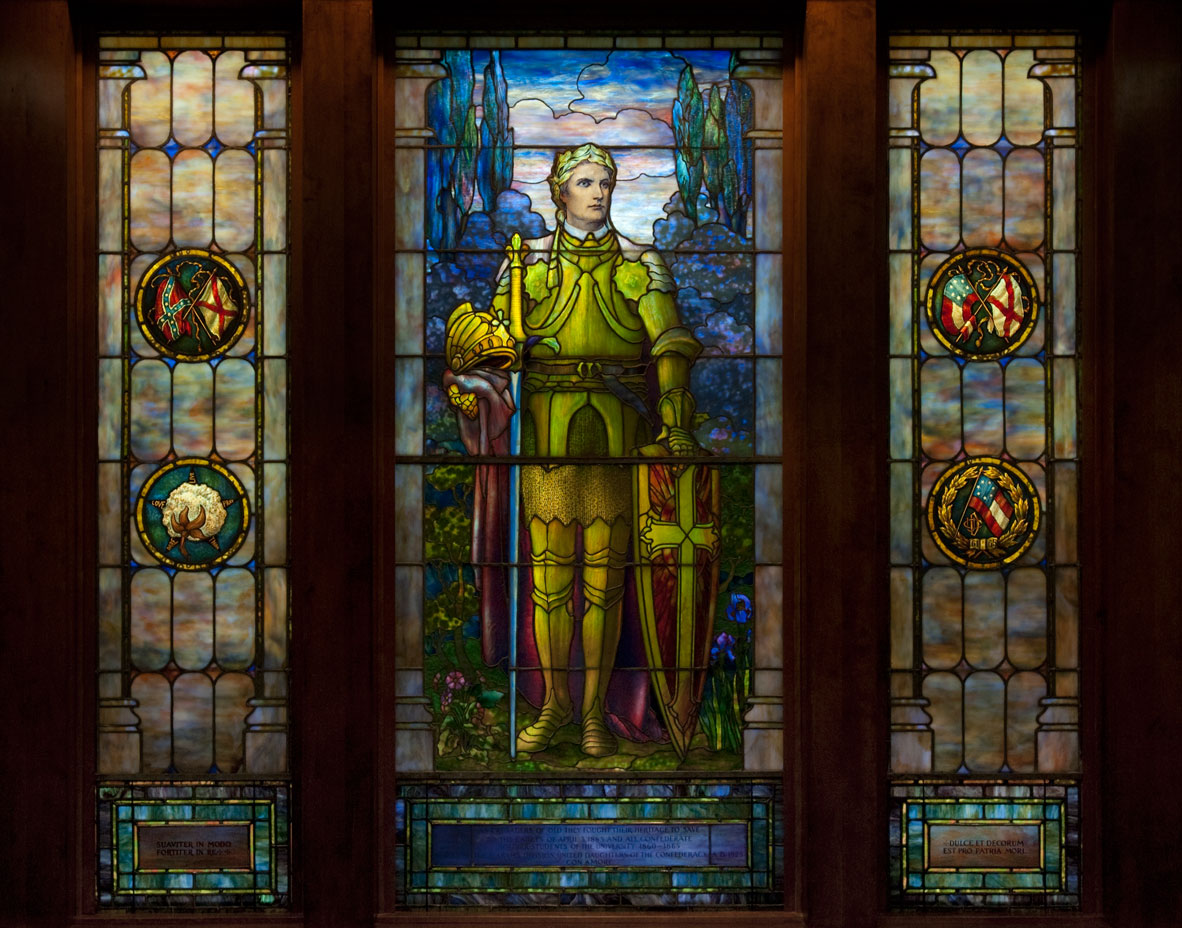By Jerryn Puckett
The stained-glass window currently on display at the University of Alabama in Tuscaloosa showcases the religious and cultural iconography of the Post-Civil War South. Religion has been intertwined with the Southern cause since before the Civil War. In the eyes of the South, slavery and the Southern establishment were a divine right that had been bestowed on them. This divine right needed to be protected; thus, any act of aggression against the South was an act against their religious beliefs. Prior to the Civil War, sermons spread through the South carrying a message of a divine crusade. They preached that it was the responsibility, and destiny, of Southerners to protect morality and Southern virtues from corruption.
Image: Courtesy of Teresa Golson
When the war broke out, it was interpreted as being the peak in a moral crisis and a battle against corruption and virtue. Religion was used to defend the existence of the Southern establishment and was the foundation of Southern culture. Thus, it would be the motivator for them to continue a war.
After the war, there was a desire to create a culture that was even more distinct than other parts of the nation. The solution was to further weave cultural and religious identities into perceptions of Southern defeat. Falling back on the old sermons and the concept of the divine crusade, religion not only explained what had happened, but it also gave many Southerners a community to cling to. The combination of spiritual religion and cultural religion created the narrative of the Lost Cause; an idea that the South had a distinct and superior culture that was pure. The war was not fully lost and if they adhered to their values, they could triumph against impure invaders.


